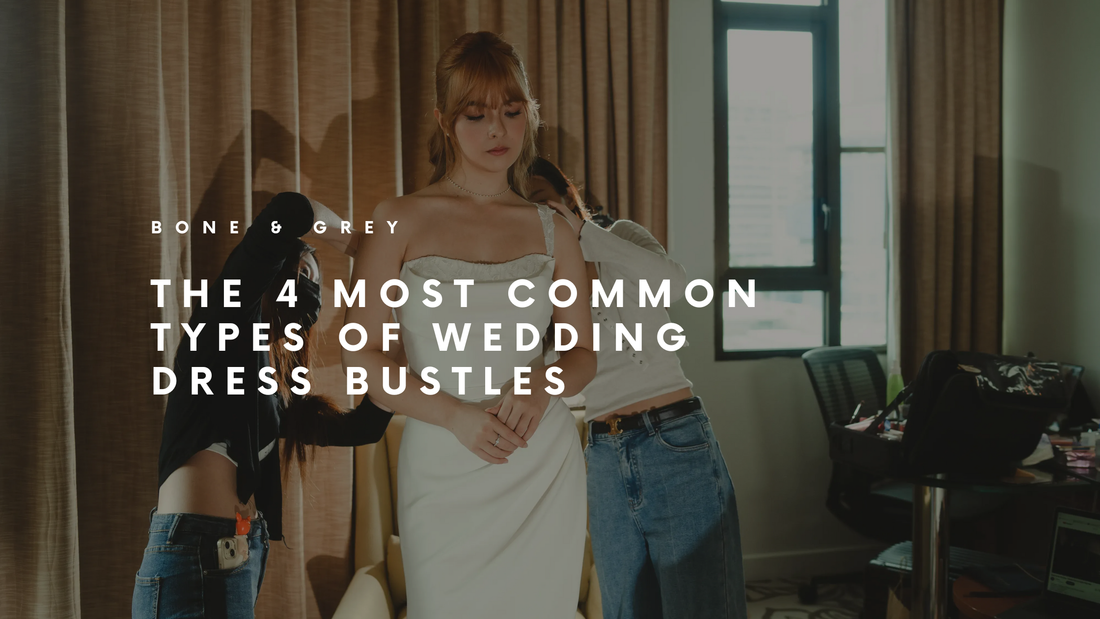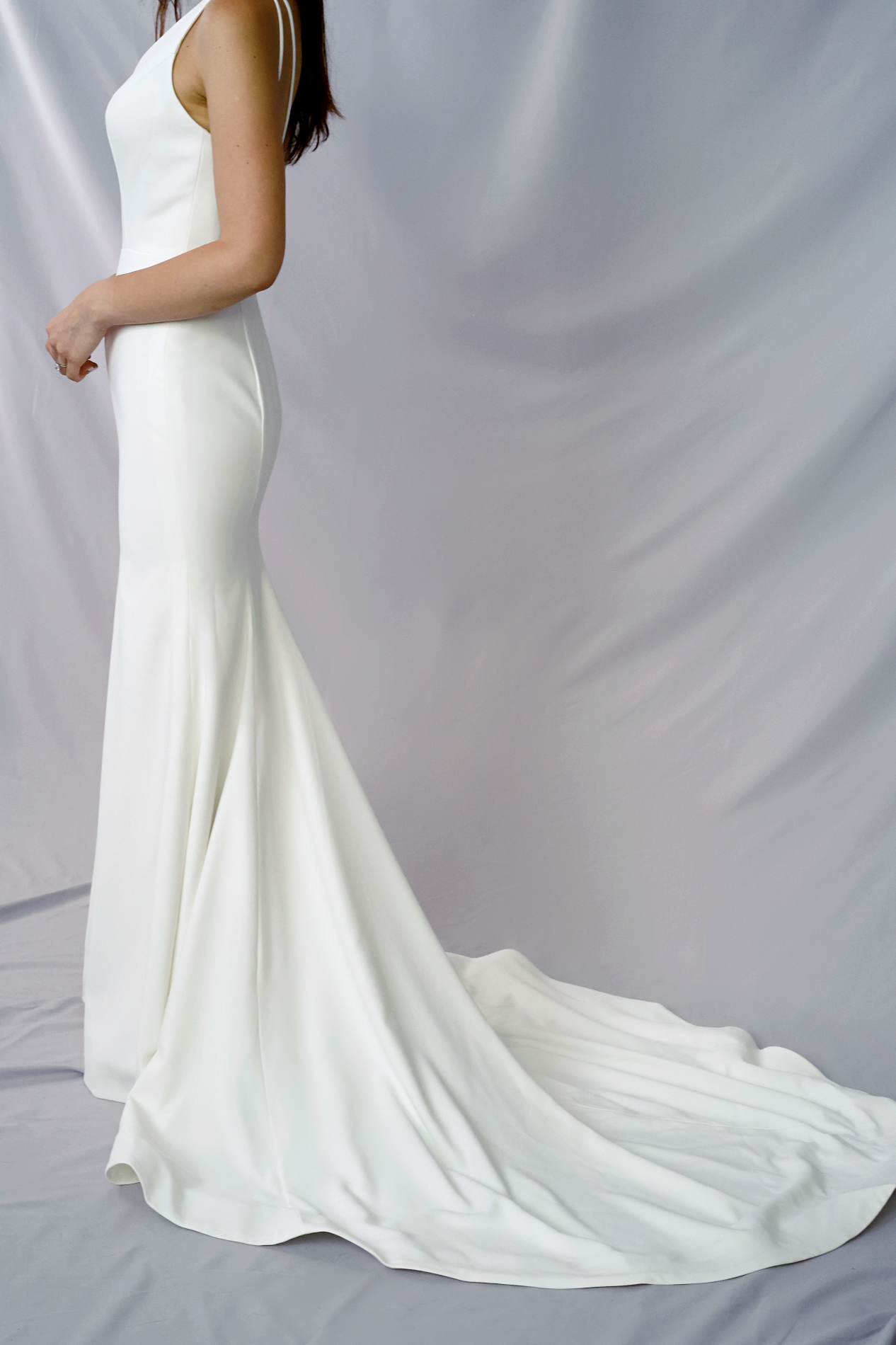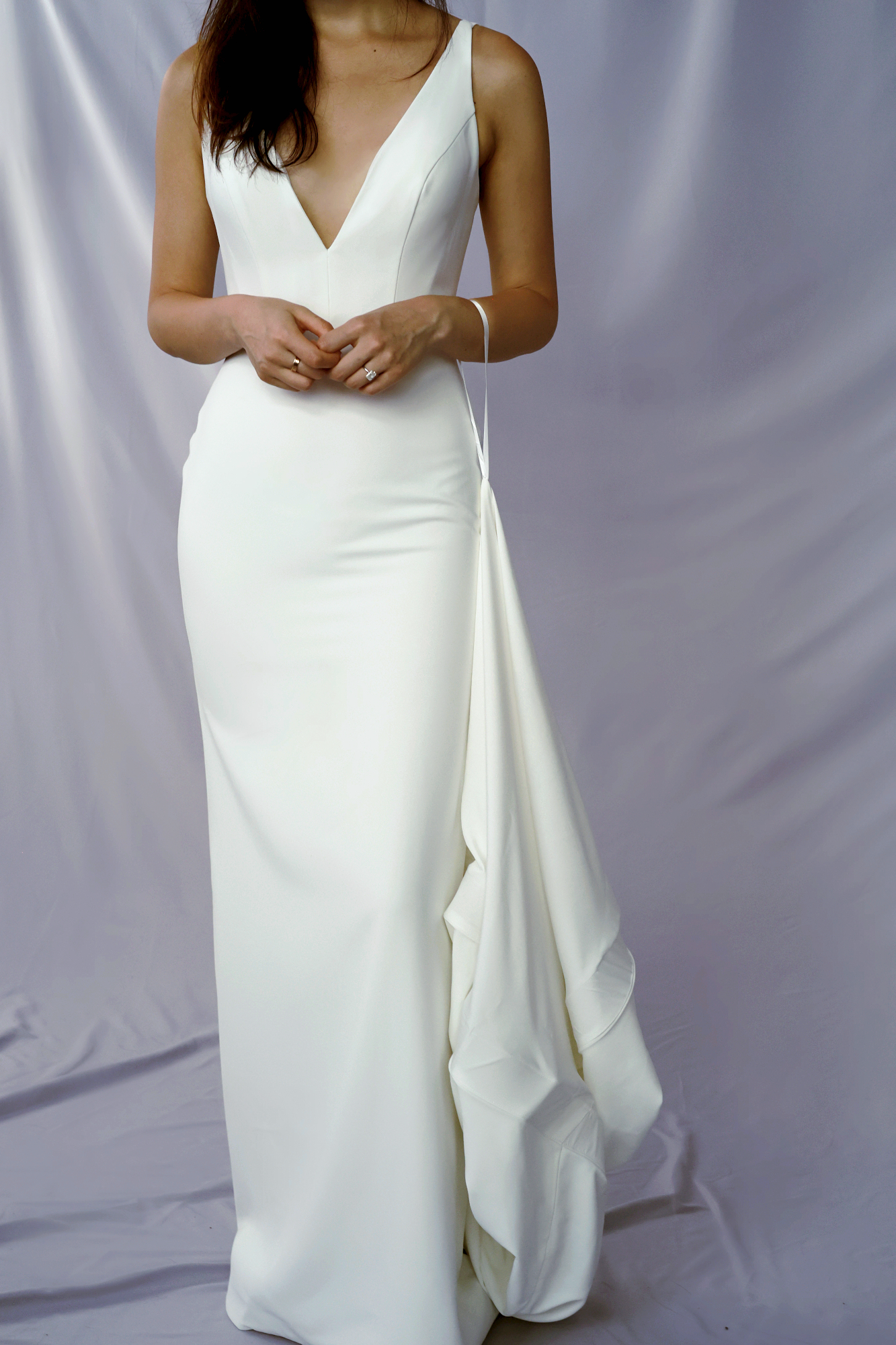When you search for the word “bustle” online, you’ll find images spanning centuries - from Victorian-era gowns to modern-day wedding dresses. But what exactly is a bustle, and why does it matter whether your wedding gown has one?
Trying to figure it out can be frustrating: most images don’t clearly show what a bustle is or what it does, and different sources call it by different names. That’s why we’ve created the ultimate guide to the 4 most common types of bridal gown bustles in the wedding industry. Our goal is to answer your questions, explain their functions, and give you a clearer picture of how bustles work so you can make informed choices for your big day.
The 4 Most Common Types Of Wedding Dress Bustles
Where Did Bustles Come From?![]()

Victorian Bustle

Wedding Gown Bustle
Originally, bustles were purely aesthetic originating from the Victorian era (mid- to late 1800s) as an evolution of the crinoline hoop skirt (the cage-like structure we still see nowadays underneath skirts). As fashion moved away from full bell shapes, designers created the crinolette, a half crinoline that supported only the back of the skirt. This gradually developed into the bustle, to create the illusion of a fuller back and smaller waist.
Over time, fashion evolved, and these heavy structures were replaced with softer, collapsible versions, often made from fabric pads or gathered layers of material allowing women to sit comfortably while still maintaining that curvaceous silhouette.
In modern bridal wear, the term “bustle” refers to the technique of lifting and securing the train of a gown under or over the skirt, a nod to its Victorian roots. However, its purpose has shifted from aesthetic enhancement to functional practicality, helping brides move, dance, and enjoy their day with ease.
1. Wrist Loop Bustle
The Wrist Loop Bustle is a modern and practical adaptation for today’s brides, not a historical Victorian design. It emerged as a simple solution for lifting lighter trains without needing a full bustle or assistance.
The Wrist Loop Bustle attaches a small loop to the train of the gown, allowing the wearer to lift the fabric and slip it around her wrist. This keeps the train off the floor, protects it from dirt, and makes moving, dancing, or walking easier.
Recommended For:
- Lightweight or shorter trains
- Flowing fabrics like chiffon, tulle, organza, soft satin, or soft crepe
- Brides who want a quick, solo bustle without assistance
Tips & Tricks for Wrist Loop Bustles
- Use the gown’s details: If your train has lace or embroidery, incorporate it into the wrist loop, such as a chain of beads or pearls, to blend seamlessly with the dress.
- Consider placement: Instead of leaving the loop under the train, create a small gap between the center-back panels and position the loop there. This lets you carry the train right-side-up, keeping the underside hidden for a cleaner, classier look. When not in use, the loop can be tucked under the train, keeping it out of sight for photos.
2. American Bustle
The American Bustle, also known as the Over-Bustle, takes inspiration from the 19th-century Victorian bustle but is a modern bridal adaptation. It relies on hidden loops, buttons, or hooks sewn to the gown’s outer layer. It became popular in the 20th century as a practical way to lift long trains for dancing and movement after the ceremony.
The American Bustle lifts the train over the outside of the gown, creating soft, elegant drapes that spread from a point while keeping it off the floor.
Recommended For:
- Medium to heavy trains
- Structured fabrics like satin, mikado, heavier crepe, or duchess satin
- Brides who want a classic, elegant draped look that lifts the train over the gown best
Tips & Tricks for American (Over) Bustles
- Add details for attachment: Sew buttons, beads, or hooks at the back of your gown to attach the bustle easily. This distributes the weight, prevents the train from pulling on your gown, and lets you choose how high or low you want the bustle.
- Plan the folds: Practice lifting and draping the train ahead of time so the folds fall naturally and elegantly.
- Use the bottom loop creatively: You can wear the bottom loop on the train as a ring for a secure, temporary way to carry the train.
3. French Bustle

Without Bustle

With Bustle
The French Bustle, also known as the Under-Bustle, is a modern reinterpretation of late 19th-century bustle silhouettes. Unlike the historical wire or padded frames of the Victorian era, the French Bustle uses hidden ties, ribbons, or hooks beneath the skirt to lift the train from underneath. Valued for its discreet and romantic look that echoes the soft draping of antique gowns.
The French Bustle tucks the train under the gown, creating smooth, cascading folds that maintain the gown’s shape while keeping the fabric off the floor.
Recommended For:
- Delicate or lace-heavy fabrics
- Long or ornate trains
- Brides who want a hidden, seamless bustle that keeps folds neat and polished
Tips & Tricks for French (Under) Bustles
- Label your ribbons: Number or mark each ribbon so you know exactly where each one should attach, making setup quick and easy.
- Reinforce for heavier gowns: Use strong ribbons or a combination of ribbons and buttons to ensure the bustle can support the weight without tearing.
- Be prepared for layers: Some gowns may have three layers—outer fabric, lining, and inner lining—for bustle attachment. This can feel warm, so plan accordingly.
- Practice for smooth folds: Test lifting the train beforehand to ensure cascading folds fall naturally and stay in place during movement.
4. Ballroom Bustle
The Ballroom Bustle is a modern bridal innovation, not a historical Victorian design. It takes inspiration from the graceful movement of 19th-century ball gowns but was developed in the late 20th century as a way to fully lift and secure a gown’s train for unrestricted dancing and walking. Instead of external draping, this bustle uses multiple hidden pickup points beneath the skirt to create a natural, floor-length hemline.
The Ballroom Bustle tucks the entire train under the skirt, making it appear as though the gown never had a train at all.
Recommended For:
- Extra-long or very heavy trains
- Full ball gowns or layered skirts
- Brides who want maximum mobility for dancing or walking while keeping the gown voluminous and elegant
Tips & Tricks for Ballroom Bustles
- Check for comfort: Make sure ribbons or ties don’t pull too tightly—adjust lengths so you can move and dance freely.
- Balance the lift: Distribute pickup points evenly around the skirt’s back and sides to create a smooth, rounded shape instead of sharp gathers.
- Support the volume: For very heavy gowns, consider a light crinoline or netting layer underneath to reduce strain on bustle points.
- Use sturdy anchors: Reinforce attachment points with buttons, loops, or twill tape to securely hold the gown’s weight.
- Keep an emergency kit: Have safety pins, thread, and a small needle ready in case a ribbon or loop comes loose mid-event.

In Summary
After exploring the top 4 most common types of bustles, we hope you now have a clearer idea of what they are, what they do, and which one might be perfect for your wedding, whether you’re dreaming of a long train that gracefully covers the aisle or a shorter one for a relaxed lawn wedding.
Knowing which bustle works best for your gown and your venue can make a big difference, saving you and your gown from unnecessary stress on the big day.
We hope this article has been helpful! If you have any questions or want to learn more about our gowns, feel free to reach out to us via email, WhatsApp, or follow us on Instagram.








